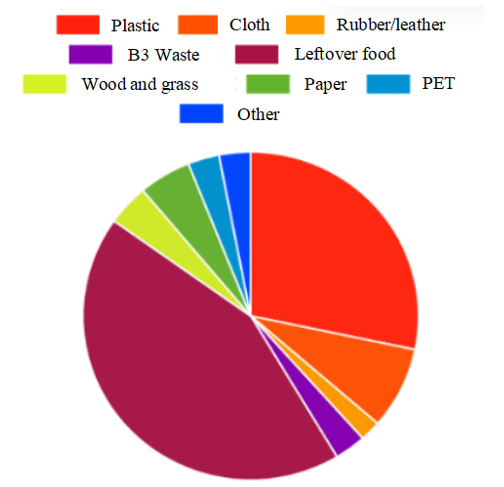Waste Power Plant as an Innovative Solution to Overcome Air Pollution in Bantargebang Integrated Waste Management Facility
Main Article Content
Ihsanuddin Fadillah
Katarina Apriani
Intan Suroya Hazlin
Syabrina Samsu Raudathul Mawadah
Suyen E M Siringoringo
M. Ridho Ulya
Muhammad Hakiem Sedo Putra
Background: The dominance of domestic waste in Bantargebang Integrated Waste Management Facility (IWMF), makes the characteristics of the waste can be categorized as combustible waste, with the type of waste mostly plastic and non-plastic. Waste dumped in Bantargebang creates new problems related to environmental pollution. The Merah Putih Waste Power Plant (Pembangkit Listrik Tenaga Sampah = PLTSa) is an important thing in efforts to control air pollution and waste management, where the quantity of waste production is relatively large and needs to be handled immediately.
Aims: This study aims to analyze the benefits of the Waste Power Plant in reducing air pollution at the Bantargebang IWMF.
Methods: The research uses a descriptive approach to systematically describe, analyze, and explain phenomena. In addition, quantitative analysis is applied to process and interpret data in the form of numbers. Data collection methods include air pollution data analysis, where air quality monitoring data was collected between 2019 and 2024 after the PLTSa began operating.
Result: Based on the data obtained, the air quality in 2019 before the PLTSa operated and after the PLTSa operated in 2024, it can be seen that the concentration of PM2.5 decreased to 33.8 µg/m³, SO2 decreased to 2.1 µg/m³, CO decreased to 1,437.0 µg/m³, NO2 decreased to 0.5 µg/m³. Furthermore, it can be seen that after the PLTSa Merah Putih Bantargebang began operating in mid-2019, it showed benefits in 2024, where most air pollutants decreased compared to 2019 (before operated), such as PM2.5, SO₂, CO, and NO₂. This decrease reflects the success of the emission control system from the waste combustion process applied to the PLTSa.
Ihsanuddin Fadillah , University of Lampung, Indonesia
Department of Environmental Engineering, University of Lampung, Lampung, Indonesia
Katarina Apriani , University of Lampung, Indonesia
Department of Environmental Engineering, University of Lampung, Lampung, Indonesia
Intan Suroya Hazlin , University of Lampung, Indonesia
Department of Environmental Engineering, University of Lampung, Lampung, Indonesia
Syabrina Samsu Raudathul Mawadah , University of Lampung, Indonesia
Department of Environmental Engineering, University of Lampung, Lampung, Indonesia
Suyen E M Siringoringo , University of Lampung, Indonesia
Department of Environmental Engineering, University of Lampung, Lampung, Indonesia
M. Ridho Ulya , University of Lampung, Indonesia
Department of Environmental Engineering, University of Lampung, Lampung, Indonesia
Muhammad Hakiem Sedo Putra , Institute Technology of Sumatera, Lampung, Indonesia
Department of Integrated Water Management Engineering, Institute Technology of Sumatera, Lampung, Indonesia








